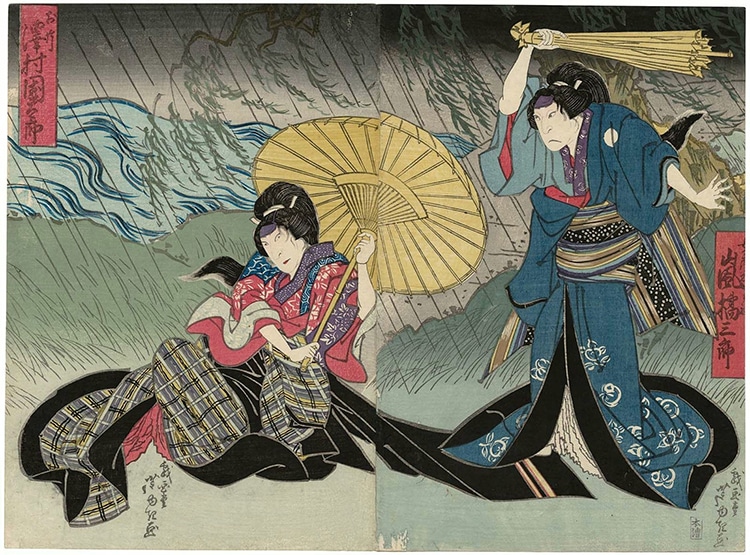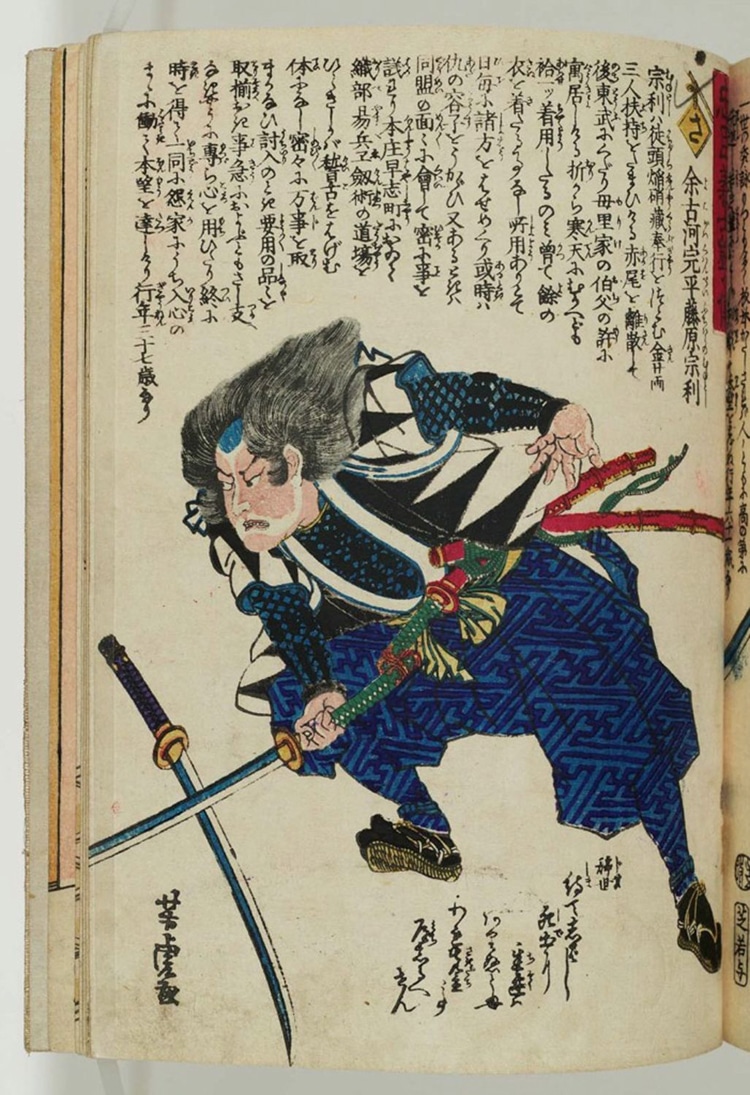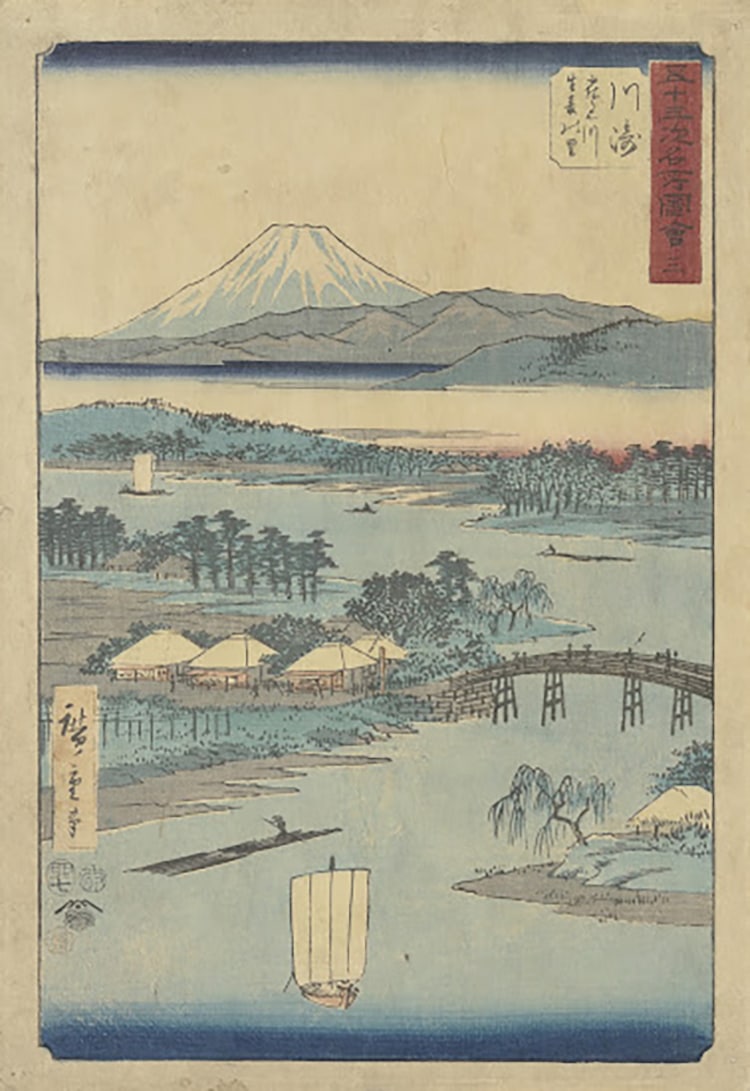
“Actors Arashi Kitsusaburô (R) and Sawamura Kunitarô (L),” Ukiyo-e print by Gigado Ashiyuki, 1828. (Photo: MFA via ukiyo-e.org)
Japan has a rich and colorful artistic history. In the late 17th century, woodblock printing became a popular medium of artistic expression. Known as ukiyo-e—meaning pictures of the floating world—these stunning prints are produced by carving an illustration into a block of wood, making an impression with ink, and painstakingly hand-painting color details. Ukiyo-e works depict famous scenes from literature and theater, as well as lovely landscapes and other subjects. You can explore and download over 220,000 prints from across the genre's long history thanks to the site Ukiyo-e Search.
Many thousands of prints were produced and widely distributed by publishers. The peak production of ukiyo-e was in the 19th century, but Japanese artists still use the historic technique to create contemporary pieces. Ukiyo-e Search has a helpful breakdown by period and artist. Each of the 223,128 (and counting) works is free to download. The site is also useful for art historians, who can track prints and find long-lost copies.
Other collections are also virtually explorable. The Metropolitan Museum of Art has digitized and made available hundreds of beautiful illustrated Japanese books. These works include artwork by Utamaro, Hokusai, and Hiroshige—each famous woodblock artists. The Van Gogh Museum in Amsterdam also offers its collection of woodblock prints online. The famous artist left behind a vast collection of Japanese art that inspired his own work. You can poke around all of these collections to find your favorite works of art and learn more about Japanese art history in the process.
You can explore and download over 220,000 prints from across the history of ukiyo-e online.

“The Syllable Sa: Yokogawa Kanpei Fujiwara no Munetoshi,” from the series “The Story of the Faithful Samurai in The Storehouse of Loyal Retainers (Chûshin gishi meimei den),” by Utagawa Yoshitora, 1864. (Photo: MFA via ukiyo-e.org)
The Japanese woodblock printmaking tradition peaked in the 19th century but traditional techniques are still used by artists today.

“Kawasaki: The Village of Namamugi on the Tsurumi River, no. 3,” from the series “Collection of Illustrations of Famous Places near the Fifty-Three Stations [Along the Tōkaidō],” by Utagawa Hiroshige, 1858. (Photo: Van Gogh Museum)
Related Articles:
Letterpress Printing: From Its Beginnings to the Artisan Revival Going on Today
Download 1,000+ Japanese Woodblock Prints by Edo-Era Master Hiroshige
10 Facts About Utagawa Hiroshige: The Last Great Master of Japanese Woodblock Printing
10 Print Artists That Will Inspire You to Try Silk Screen Printing at Home






















































































